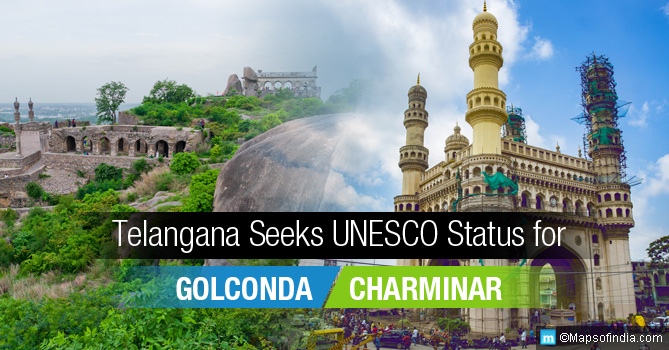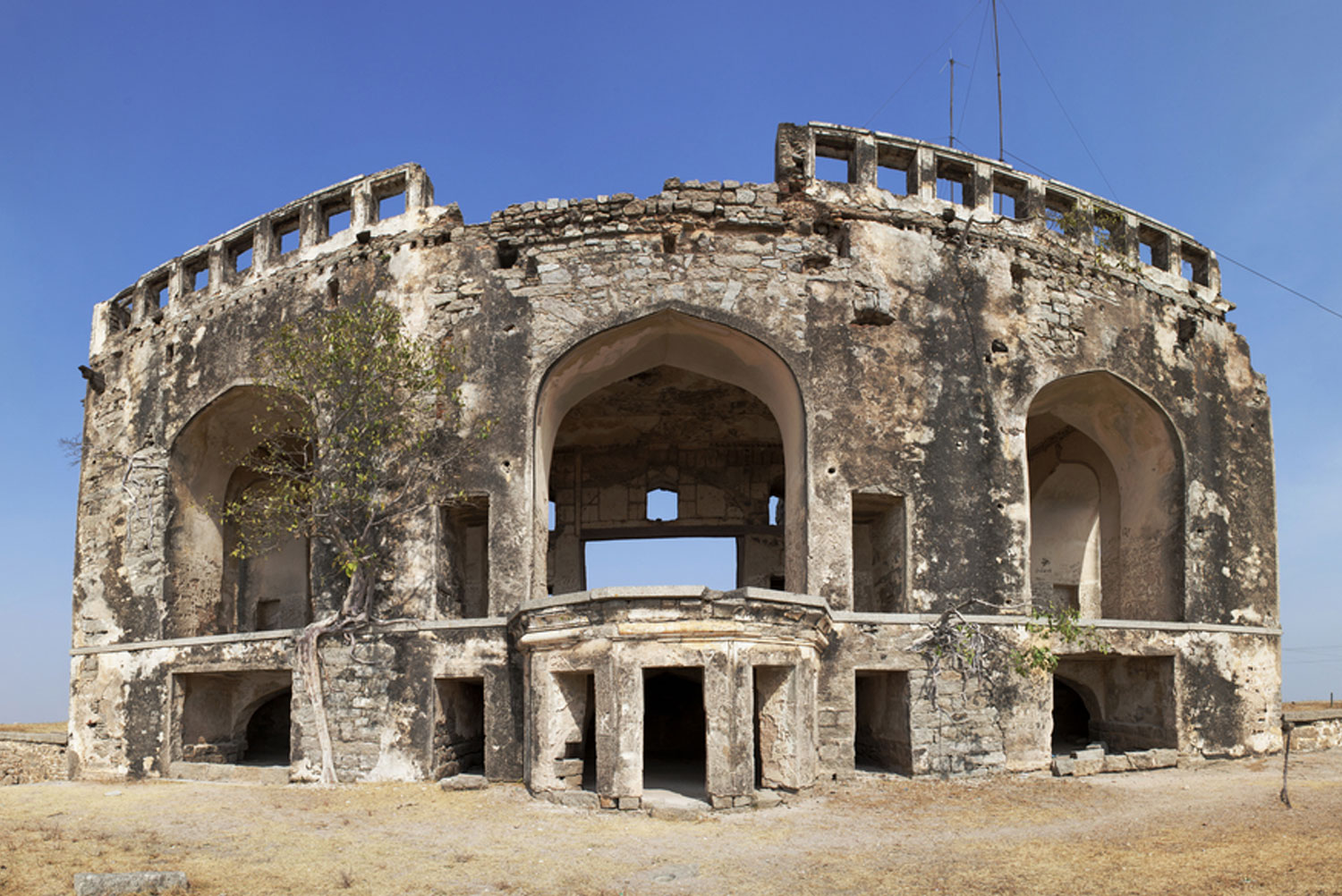The Telangana Government is working towards getting UNESCO recognition for Charminar, Golconda Fort and Qutub Shahi Tombs.
The Government of Telangana is planning to set up a special task force to help towards removing encroachments or unauthorised constructions in or around historic sites and monuments in the city. If required, services of retired employees will be pooled-in in this endeavour, as per Municipal Administration and Urban Development Minister K T Rama Rao.
World Heritage Sites
UNESCO (United Nations Educational, Scientific and Cultural Organization) regards the World Heritage Sites as being important to the collective interests of humanity. UNESCO recognises specific landmarks as World Heritage Sites on the basis of the following criteria:
- The site should already be classified as a landmark site.
- It should be unique as a geographically and historically identifiable place.
- It should have a special cultural, historical, scientific or some other form of significance.
- It should showcase extreme human endeavour coupled with an act of indisputable accomplishment of humanity, which would serve as a surviving evidence of its intellectual existence on the planet.
- The site should be legally protected by international treaties.
The intent of recognising World Heritage Sites is to conserve them for posterity, and not let them get subjected to negligence (or human or animal trespassing) resulting in the damage to the same. The listed sites can avail of funds from the World Heritage Fund.
India already has 27 Cultural, 7 Natural and 1 Mixed World Heritage Sites recorded with the UNESCO.
Know More About Charminar, Golconda Fort and Qutub Shahi Tombs
Charminar
- The Charminar was constructed in 1591 CE by the fifth ruler of the Qutb Shahi dynasty, Sultan Muhammad Quli Qutb Shah.
- The monument is a mosque and is located on the east bank of Musi river, in Hyderabad, Telangana, India.
- The Charminar is considered to be the global icon of Hyderabad.
- It features in the official “List of Monuments” prepared by the Archaeological Survey of India (ASI).
- It is believed that the Charminar was built in the centre of the city to commemorate the eradication of plague which was widespread at that time.
- Sultan Muhammad Quli Qutb Shah had prayed for the end of plague at that very spot and had vowed to build a mosque at the same spot if his prayers were heard.
The ASI took up the restoration work of the minarets of Charminar in 2016.
Golconda Fort
- Golconda is a citadel and fort, and was the capital of the medieval sultanate of the Qutb Shahi dynasty (c.1518–1687).
- It is located 11 kilometres west of Hyderabad, Telangana, India.
- Many famed diamonds have been excavated from the mines of the Golconda Fort including the famous gems Koh-i-Noor, the Hope Diamond, the Nassak Diamond, Daria-i-Noor, Noor-ul-Ain, Princie Diamond, Regent Diamond, Wittelsbach-Graff Diamond.
- While the fort was first built by the Kaktiya Dynasty, it rose to prominence under the rule of Sultan Quli Qutb-ul-Mulk, when he established it as the seat of his government in 1501.
- Initially built with mud, it was expanded by the first three Qutb Shahi sultans into the present structure, a massive fortification of granite extending around 5 km in circumference.
- It remained the capital of Qutb Shahi dynasty until 1590 when the capital was shifted to Hyderabad.
- The fort of Golkonda is known for its magical acoustic system.
- It is believed that there is a secret underground tunnel that leads from the “Durbar Hall” and ends in one of the palaces at the foot of the hill.
- The fort also contains the tombs of the Qutub Shahi kings.
- The Golkonda fort is listed as an archaeological treasure on the official “List of Monuments” prepared by the ASI under The Ancient Monuments and Archaeological Sites and Remains Act.
The ASI started with restoration work for conservation of historical structures within the fort with an outlay of Rs 65.90 lakh in 2015.
Qutub Shahi Tombs
- The Qutub Shahi Tombs are located in the Ibrahim Bagh.
- It is a garden precinct close to the famous Golkonda Fort in Hyderabad, India.
- The garden contains the tombs and mosques built by the various kings of the Qutb Shahi dynasty.
- While the smaller tombs are of single storey, the larger ones are two storied.
- The centre of each tomb is a sarcophagus, a stone coffin, typically adorned with a sculpture or inscription.
- The sarcophagus overlies the actual burial vault in a crypt below.
- The style of the tombs blend with Persian, Pashtun and Hindu forms with intricately carved stonework and surrounded by landscaped gardens.
Aga Khan Trust for Culture (AKTC) has undertaken the restoration and conservation work of Quli Qutub Shahi tombs since 2015. The restoration will be at a cost of Rs 100 crore and it might take up to 10 years.
India with its most diverse cultural heritage has a wealth of monuments across its length and breadth that belong to both the victor and the vanquished. These architectural testimonies speak of our glorious past. India awaits eagerly the inclusion of the Charminar, the Golconda Fort and the Qutub Shahi Tombs in the World Heritage Site list.





